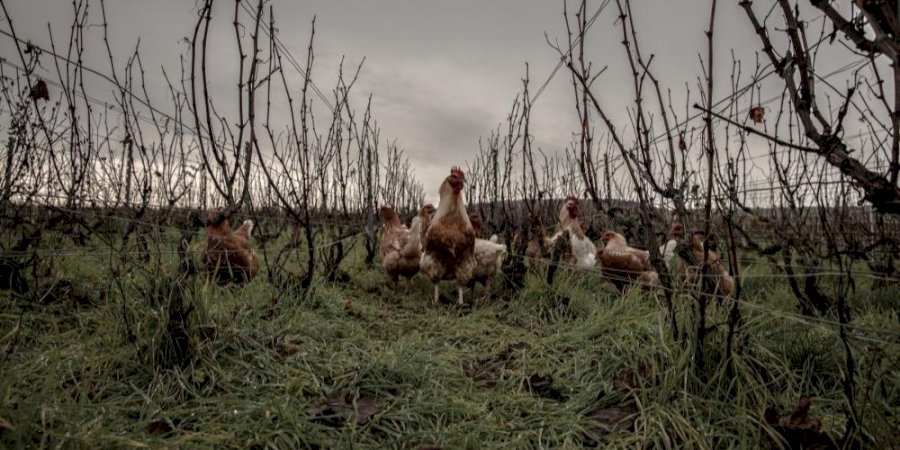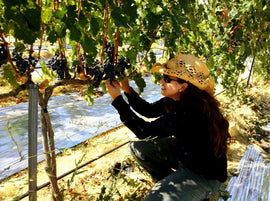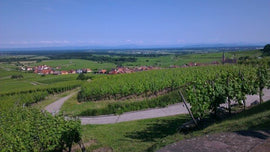Mouzon-Leroux L’Ineffable Blanc de Noirs 2017
You might associate the year 1776 with a handful of epochal USA events, but my five minutes of research just now suggests that the whole world had a lot going on at the time. The Decline and Fall of The Roman Empire? Bet you didn’t know that it started in 1776.* Big year for San Francisco specifically as well - Mission Dolores and Fort Presidio were both established during its rotation. And on October 18th 1776, at a bar decorated with bird tails in Elmsford, New York, a customer requested a glassful of “those cock tails” from bartender Betsy Flanagan, thus (allegedly) coining the term.
A centennial or two later, in the late 1980s, her descendant young Brian Flanagan would open the bar Cocktails & Dreams in an unspecified New York outer borough, keeping the family tradition alive. Similarly, the Mouzon-Leroux family Champagne concern, which we are featuring this month, dates back to 1776, and its vineyards have been “passed down from father to son” ever since. While there is not a lot of information on the in between years - sold grapes to Veuve Clicquot at some point; started bottling under the label Mouzon in 1930, and changed to Mouzon-Leroux in 1976, upon the nuptials of Philippe Mouzon & Pascale Leroux - these days they are making some of the best bubbly I’ve come across recently, courtesy of Phillipe and Pascal’s son, Sébastien.
Verzy tends to produce unique wines, different from the villages of the north (Verzenay Grand Cru) and the south (Villiers-Marmery 1er Cru), and above all very different from the famous Grands Crus of Bouzy and Ambonnay, which are sunnier and facing due south. Since taking over in 2008, Sébastien has put a heroic amount of effort into rendering this distinction as faithfully and conscientiously as possible. First, he made an in depth study of soil samples from each of his 60 plots, identifying three discrete hillsides of the village, all facing northeast, but with different strata of soils. Hillside #1, bordering Villers-Marmery, has more calcareous soil with very little clay, mainly planted with Chardonnay. On the middle hillside, where the chalk begins to sink deeper and the clay becomes heavier, he has equal parts of Pinot Noir and Chardonnay planted. The third hillside, which borders the famous Grand Cru of Verzenay, has soils richer in clay which produce more powerful wines, mainly from Pinot Noir. Then, he began slowly converting the entire eight-and-a-half-hectares estate to organic viticulture (certified 2012), and then became one of a handful of growers to earn Demeter certification for Biodynamic practices in 2019. Today, chickens are used to control cover crops and combat pests, Sébastien treats the vines with his own blend of homeopathic tinctures such as dandelion, wicker, nettle, yarrow, and oak to supplement the biodynamic regimen, and the vineyard lands now host some 1,300 trees (most of which he has planted since 2011) along with 750 aromatic plants including thyme, oregano and mint.
As to the wine itself, from these three hillside terroirs, Mouzon produces blended cuvées across the different soil types and exposures, as well as single parcel selections that express a specific site. And while you wouldn’t really call any of them hedonistic, opulent or fruit forward - as Sébastien says “in Verzy, the dominant part of the wine is the mineral part” - our selection this month, a 100% Pinot Noir from the western valley bordering Verzany (#3), has a power and clarity that’s difficult to corral via language, which is probably why Sébastien calls it “Ineffable.” I wasn’t looking to feature another Brut Nature, after using two in October, but this one was too good to pass up. Happy New Year!
Sante!
The PlumpJack Wine Team
|
Mouzon-Leroux L’Ineffable Blanc de Noirs 2017 |
|
|
From: Verzy, Montagne de Reims, Champagne |
About the Winemaking: At harvest, each parcel is carefully brought in separately by hand, with an emphasis on physiological ripeness. Natural alcoholic fermentation is done mainly in 228-liter barrels, with a few wines fermented in steel or enamel tanks. For each parcel, Sébastien creates a unique pied de cuve from earlier harvested grapes to use for fermentation, a process which he feels helps to accentuate the specific vineyard signature of each cuvée. After the initial fermentation, Sébastian will age the wines for up to two years in barrel before bottling for the second fermentation. There is no fining or filtration, and very minimal-to-zero sulfur is used in the cellar (generally 15mg total/5mg free). En tirage aging is an average of three years, with the vintage wines aging five years en tirage before disgorgement. Not surprisingly, dosage is used very sparingly, if at all, to not obscure the underlying signature of each wine. Vinification: Indigenous yeast fermentation, 100% malolactic fermentation. Aged 8 months in used Cadus barrels 58 months sur lattes, zero dosage. Disgorged March 2023 Tasting Notes: “The 2017 Extra Brut Blanc de Noirs L'Ineffable is a powerful, expressive wine loaded with Pinot character. It emerges from blocks close to Verzenay, where Pinot Noir is so distinctive. Cherry, plum, white flowers, white pepper, mint and game confer tons of character. The structure of Pinot comes through on the finish, where the 2017 is quite ineffable. This is a fine effort for the year. No dosage. Disgorged: March 2023.” 92 Vinous |
|
Winemaker: Sébastien Mouzon |
|
|
Price per bottle / Price per case: $114.99/$1241.98 |
|
|
Suggested Food Pairing: roasted meats, truffle-infused pasta, or aged cheeses. Richer seafood like salmon, or tuna. Roasted mushrooms and leeks |
|
(*By which I mean of course that the first volume of Edward Gibbon’s Decline and Fall of The Roman Empire was published on February 17, 1776)
Find similar articles
champagne club




